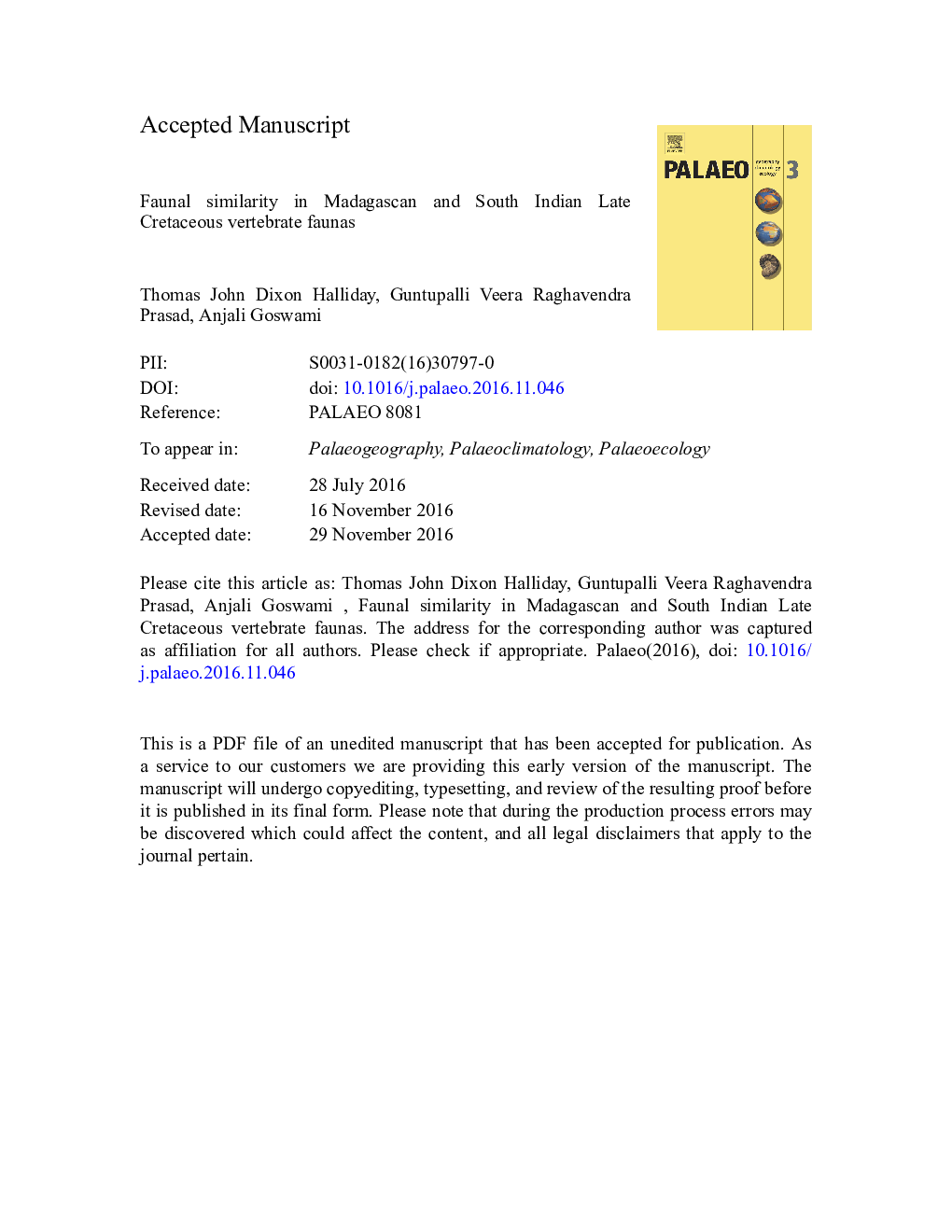| کد مقاله | کد نشریه | سال انتشار | مقاله انگلیسی | نسخه تمام متن |
|---|---|---|---|---|
| 5755762 | 1622124 | 2017 | 26 صفحه PDF | دانلود رایگان |
عنوان انگلیسی مقاله ISI
Faunal similarity in Madagascan and South Indian Late Cretaceous vertebrate faunas
دانلود مقاله + سفارش ترجمه
دانلود مقاله ISI انگلیسی
رایگان برای ایرانیان
موضوعات مرتبط
مهندسی و علوم پایه
علوم زمین و سیارات
فرآیندهای سطح زمین
پیش نمایش صفحه اول مقاله

چکیده انگلیسی
The modern-day fauna of the Indian subcontinent is a mixture of ancestral Gondwanan clades, Laurasian immigrants, and endemic radiations as a result of its complex geological history. During the latest Cretaceous, the Indian subcontinent has been reconstructed at peak isolation from other continents, having separated last from Madagascar approximately 85 million years ago. The majority of vertebrate fossils known from the Late Cretaceous of India are from the Deccan Volcanic Province, but fossil material from the Cauvery Basin in South India has provided a second diverse vertebrate fauna from this time period. Here, we use the modified Forbes and Raup-Crick faunal dissimilarity indices to demonstrate that the faunal composition of the Cauvery Basin is distinct from that of the Deccan intertrappean and infratrappean beds, and shows greater faunal similarity with the Maevarano Basin of Madagascar than other Indian localities, despite several million years having elapsed since the geological separation of the two island continents.
ناشر
Database: Elsevier - ScienceDirect (ساینس دایرکت)
Journal: Palaeogeography, Palaeoclimatology, Palaeoecology - Volume 468, 15 February 2017, Pages 70-75
Journal: Palaeogeography, Palaeoclimatology, Palaeoecology - Volume 468, 15 February 2017, Pages 70-75
نویسندگان
Thomas John Dixon Halliday, Guntupalli Veera Raghavendra Prasad, Anjali Goswami,